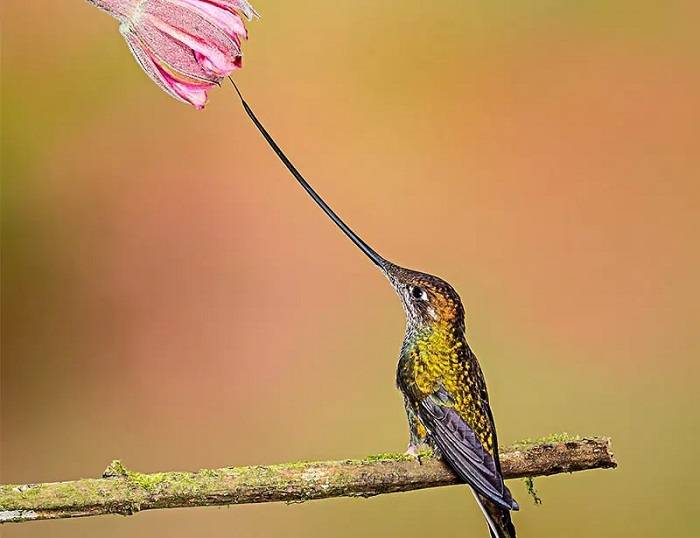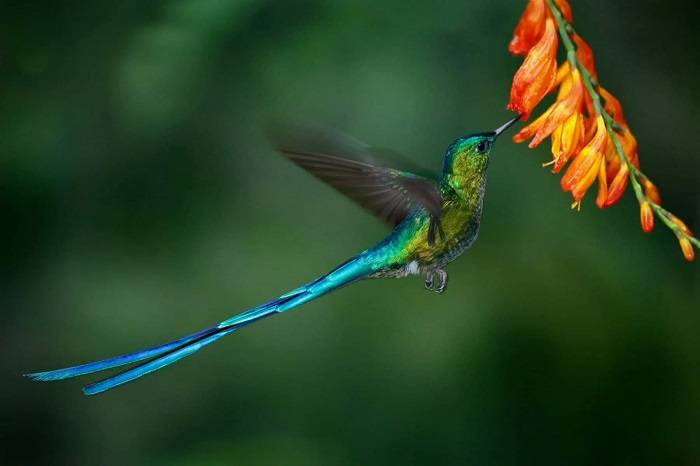In the vast world of avian diversity, small birds with long beaks stand out as fascinating and unique creatures. Their elongated bills serve various purposes, from probing for food in narrow crevices to extracting nectar from flowers. In this blog post, we’ll delve into the intriguing world of small birds with long beaks, exploring their diverse features, behaviors, and ecological significance.
The Diversity of Small Birds with Long Beaks
Hummingbirds:
- Hummingbirds, with their vibrant plumage and rapid wingbeats, are perhaps the most iconic small birds with long beaks. Their slender, elongated bills are adapted for probing deep into flowers to access nectar, making them important pollinators in ecosystems.
Sunbirds:
- Sunbirds, found primarily in tropical and subtropical regions, are known for their iridescent plumage and slender, curved bills. Like hummingbirds, sunbirds feed on nectar from flowers, using their long bills to reach deep into floral tubes.
Woodpeckers:
- While woodpeckers are not typically thought of as small birds, certain species, such as the downy woodpecker, exhibit relatively small body sizes with long, chisel-shaped bills. Their bills are adapted for drilling into wood to extract insects or sap.
Curlews:
- Curlews are shorebirds characterized by their long, downward-curved bills, which they use to probe for invertebrates in mudflats and marshes. Their distinctive bills are essential for capturing prey buried deep in the substrate.
Adaptations and Functional Morphology
Foraging Adaptations:
- The long beaks of small birds are specialized for specific feeding behaviors. Hummingbirds and sunbirds have slender bills with narrow tips, allowing them to access nectar from deep within flowers. In contrast, woodpeckers and curlews have sturdier, chisel-shaped bills for drilling into wood or probing for prey in soil.
Sensory Adaptations:
- The tips of birds’ beaks are highly sensitive, equipped with tactile receptors that help them locate and manipulate food items. This sensory adaptation is particularly crucial for species that feed on elusive prey or extract nectar from flowers.
Ecological Roles and Significance
Pollination:
- Hummingbirds and sunbirds play vital roles as pollinators in ecosystems, transferring pollen between flowers as they feed on nectar. Their long bills allow them to access nectar from flowers with deep corollas, promoting plant reproduction and genetic diversity.
Insect Control:
- Woodpeckers contribute to ecosystem health by controlling insect populations, particularly wood-boring insects that can damage trees. Their foraging behavior helps regulate insect populations and maintain ecological balance in forest habitats.
Ecosystem Engineers:
- Curlews and other shorebirds play crucial roles in shaping coastal ecosystems through their foraging activities. By disturbing sediments and aerating soils, they create microhabitats for other organisms and enhance nutrient cycling in wetland environments.
Behavioral Adaptations and Feeding Strategies
Feeding Techniques:
- Small birds with long beaks employ various feeding techniques to extract food from their environments. Hummingbirds hover in front of flowers and use their long, slender bills to probe for nectar, while woodpeckers cling to tree trunks and peck at wood to uncover insects.
Territorial Behavior:
- Many species of small birds with long beaks exhibit territorial behavior, defending feeding territories against competitors and intruders. Vocalizations, displays, and physical aggression are common strategies used to establish and maintain territories.
Small Birds
Habitat Loss and Degradation:
- Small birds with long beaks are vulnerable to habitat loss and degradation due to urbanization, deforestation, and agricultural expansion. Loss of native vegetation and fragmentation of habitats can disrupt feeding and breeding patterns, leading to population declines.
Climate Change Impacts:
- Climate change poses additional challenges for small birds with long beaks, affecting the availability of food resources, altering migration patterns, and increasing the frequency of extreme weather events. These changes can have cascading effects on populations and ecosystems.
Related Post:
Unlocking the Mystery of When Ducks Lay Eggs
Unveiling the Fascinating Differences Between Male and Female Muscovy Ducks
At What Age Do Ducks Start Laying Eggs? (The Truth)
Small birds with long beaks are a diverse and ecologically important group of avian species. Their specialized adaptations, feeding behaviors, and ecological roles contribute to the richness and complexity of ecosystems worldwide. By understanding and appreciating the unique features and contributions of these birds, we can work towards conserving their habitats and ensuring their survival for future generations to enjoy.




